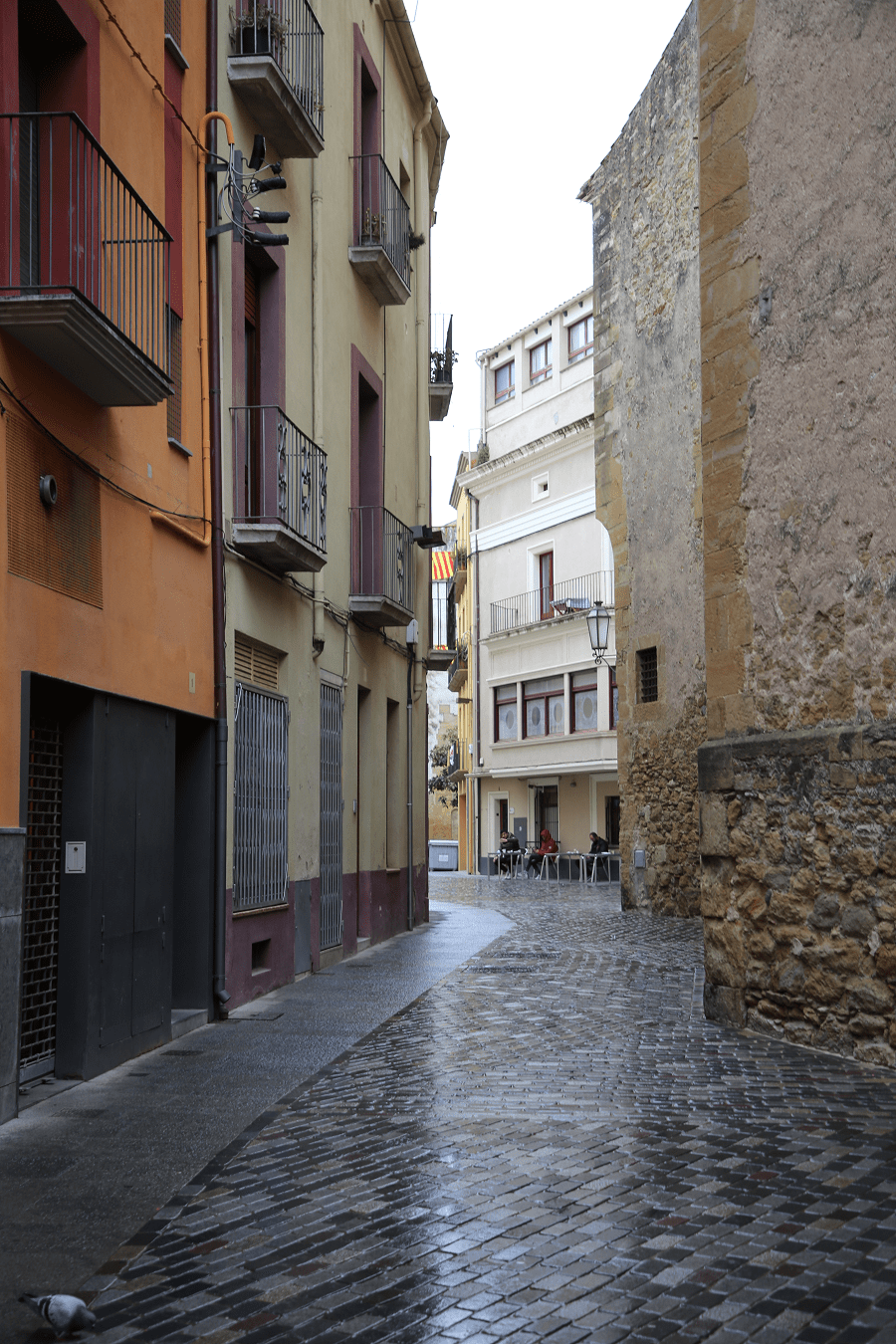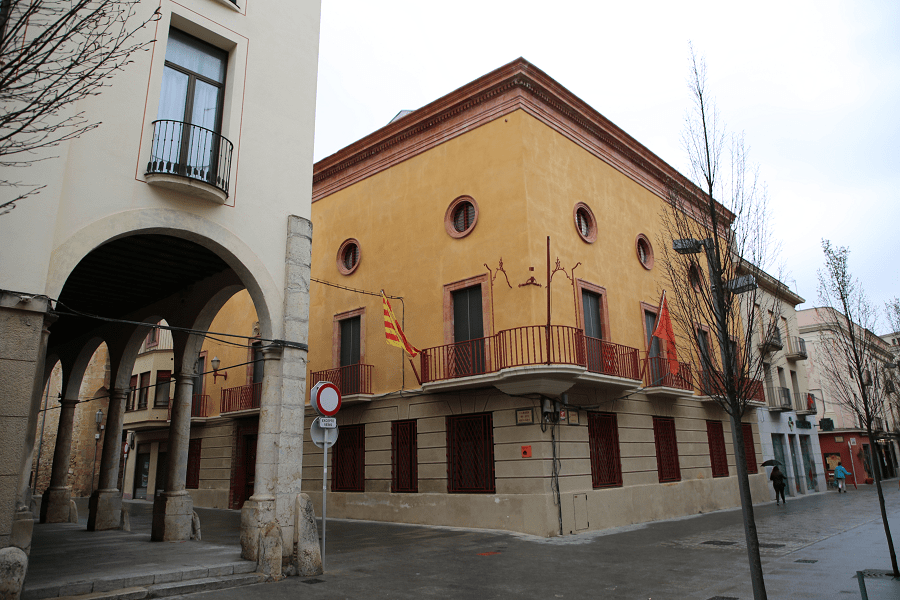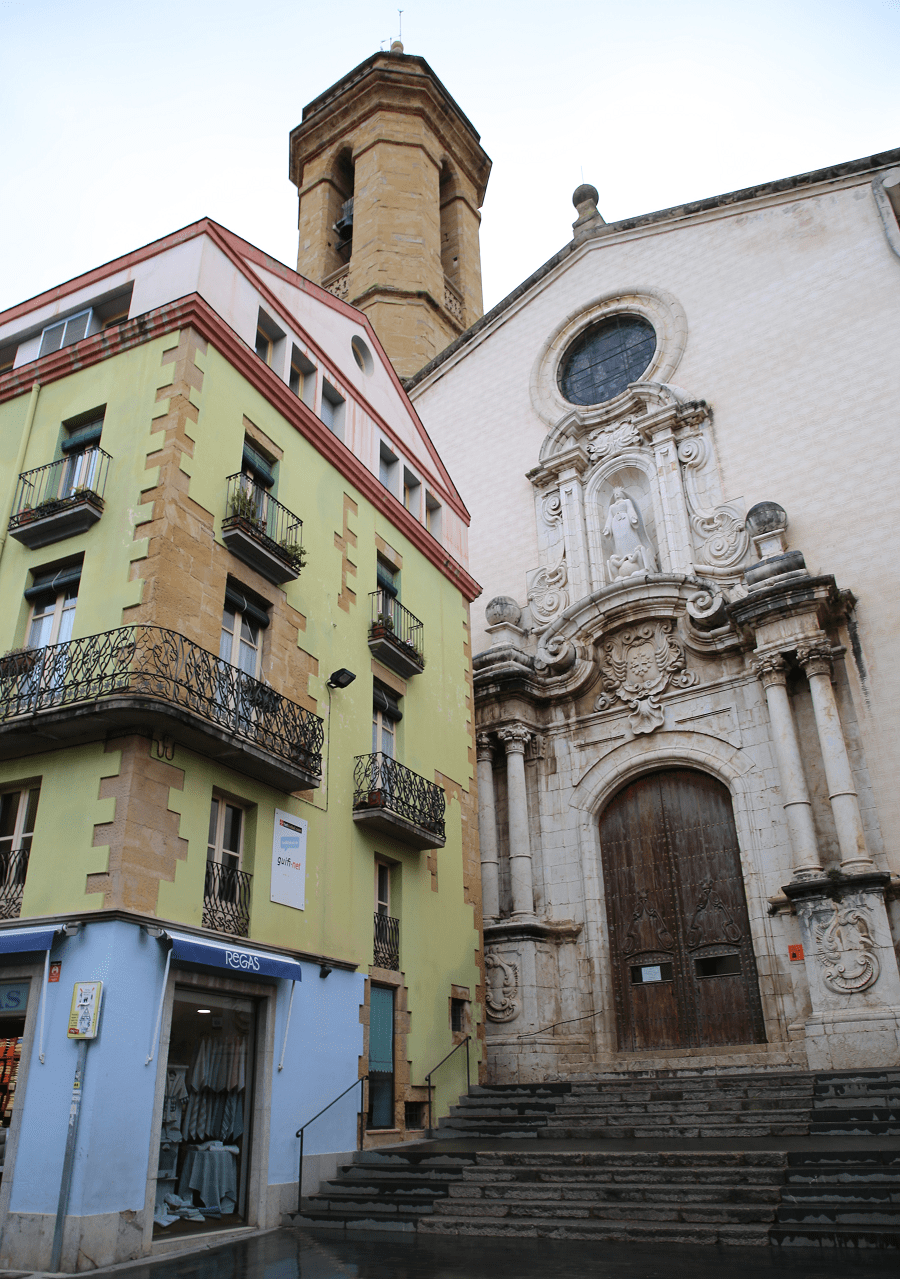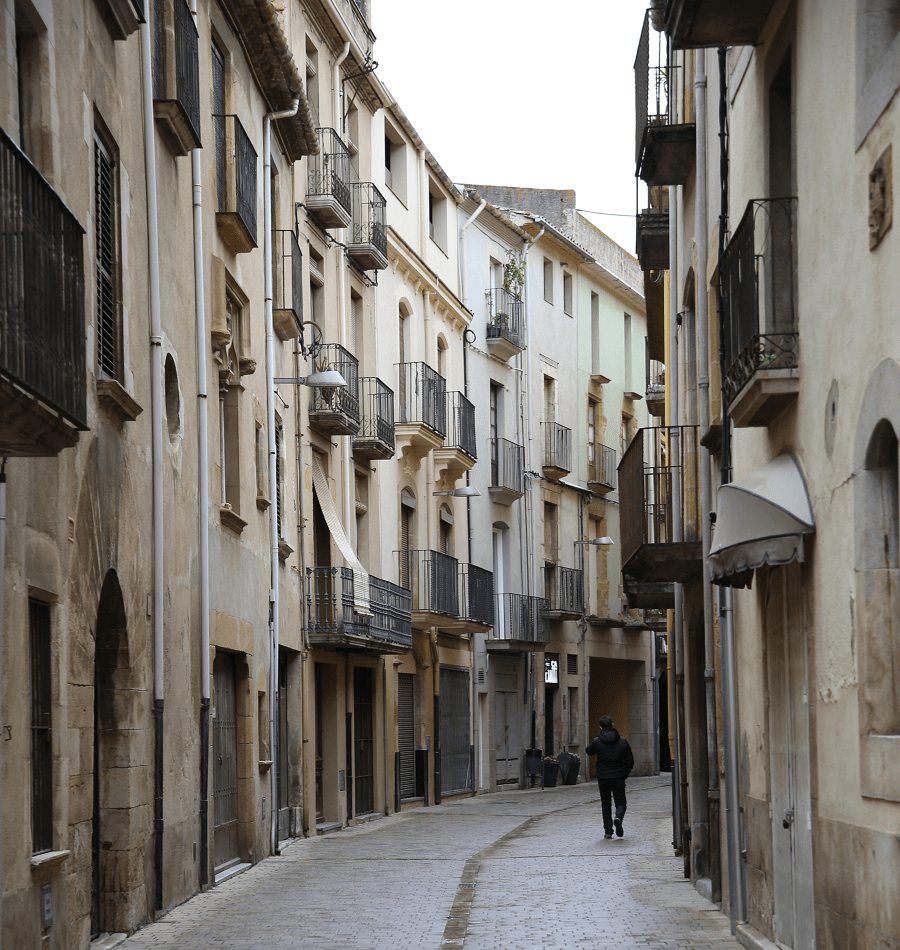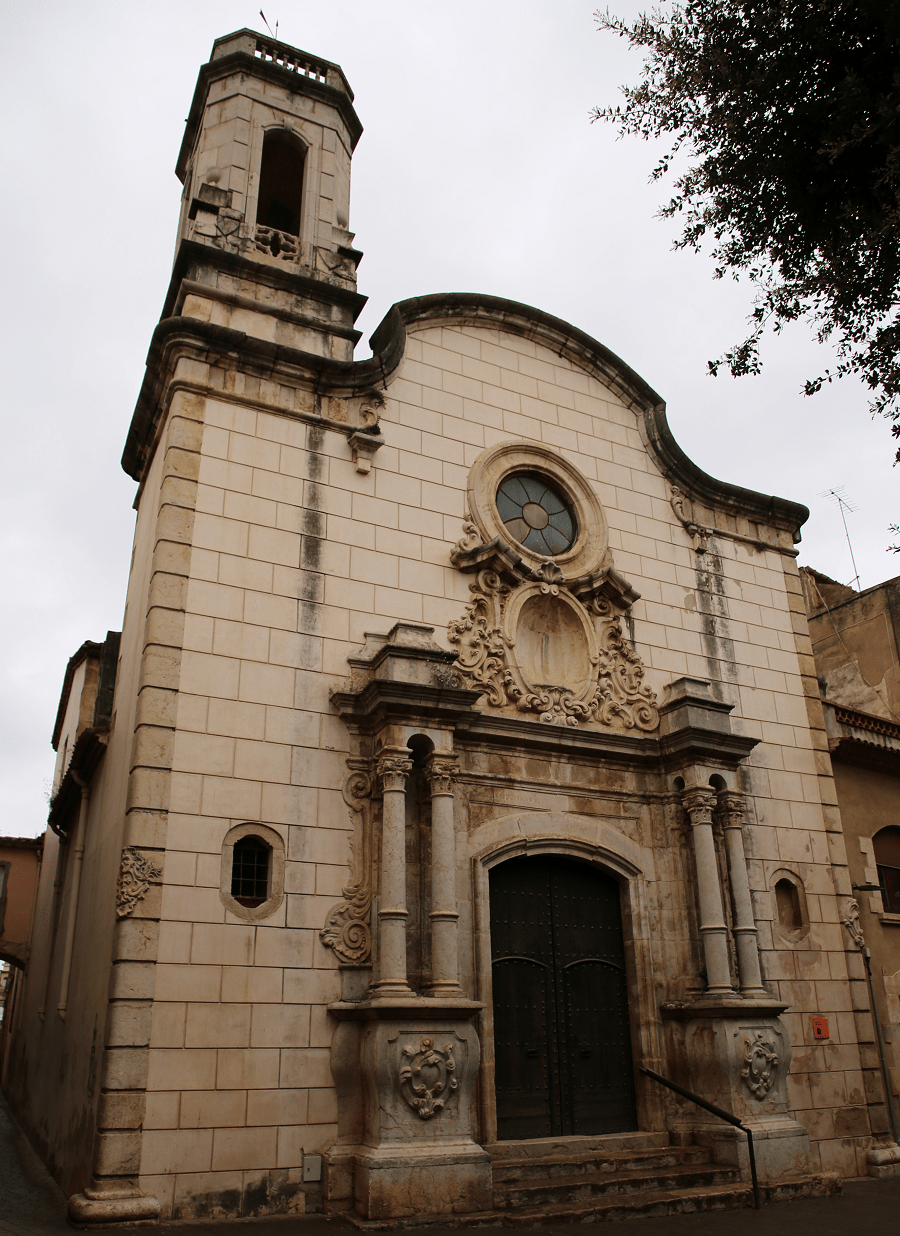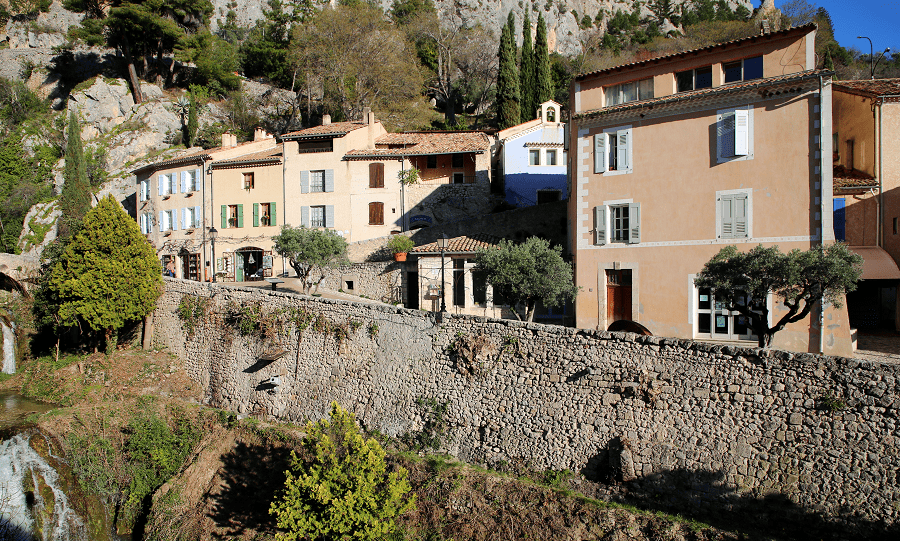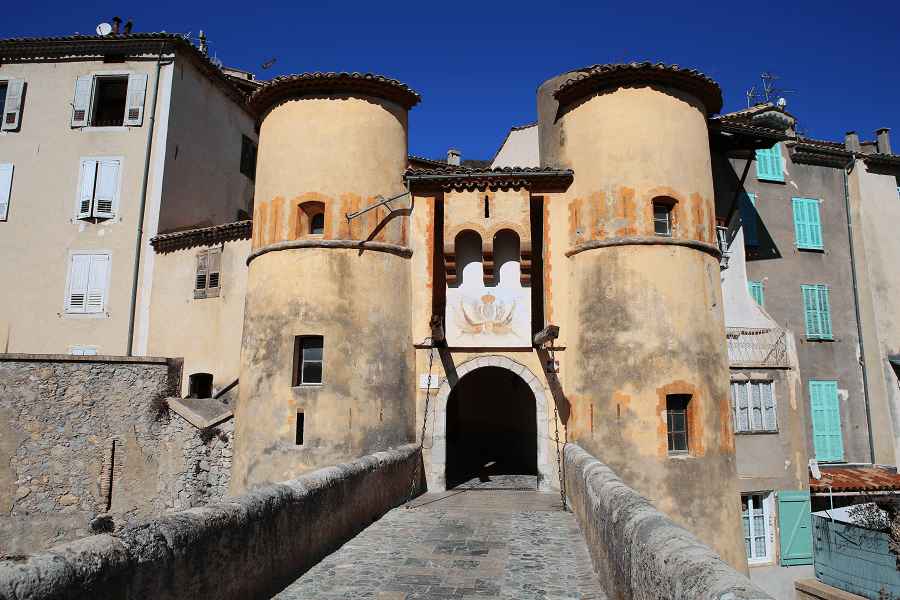La Bisbal d’Empordà (Catalan) or La Bisbal del Ampurdán (Spanish) is the capital of the Baix Empordà region and the judicial district of La Bisbal, Spain, Catalonia. The municipality is located on the Empordà plain, next to the Gavarres massif, province of Girona.
The municipality is bordered by Corsa to the north and Cruïlles to the west. In addition to the city, the county includes the cities of Castel d’Emporda and Saint Paul.
Several Roman villas were scattered throughout what became the city of La Bisbal, and between the ninth and tenth centuries formed the settlements of Fontanetum (La Bisbal), Fonsedictus (Fonteta) and Perductus (Saint Paul). These places already belonged to the bishops of Girona in 881.
Traditionally, agriculture and livestock were among the earliest sources of wealth in the municipality. At the beginning of the 20th century, the emergence of the cork industry should be noted. Today ceramics, both industrial and artistic, are the backbone of the city’s economy.
History
During the late Middle Ages, Bisbal was surrounded by a defensive wall, supplemented by bastions, moats and several towers. There were four portals through which one could get to the so-called core of the city: one on the road to Girona, another on the road to Palamos, the third went out to Calonge, and the fourth, later, to Torroella de Montgri. The streets were uneven, narrow and winding, which is typical of villages with a predominance of feudal lords. The center of social life was the Plaza Mayor, which at that time was decorated with a portico. There was also a Jewish quarter: a street with porticoes in a zigzag shape so that the interior was not visible. The mosque was supplemented by the now defunct Jewish Tower, which may have been the site of a synagogue. The area was plundered in 1285 and 1391 and abandoned by the Jews forever in the middle of the 15th century.
In 1322, the King of Aragon, Jaime II (cat. Jaume el Just), allowed the bazaar to be held on Fridays, and this tradition has survived to this day. Soon after, permission was obtained to form a municipal council. The chaplains met in the courtyard of the castle once a year and elected members to form a council, which was then to receive the approval of the bishop. He, in turn, appointed the mayor and curia. 40 directors performed advisory, legislative and oversight functions.
In the 15th century in Bisbal there was already a militia of 200 people, a school for minors, a hospital, a clock on the bell tower.
The peasants lived in farmhouses outside the wall and were under feudal control. Disagreements between peasants and city residents, especially when it came to the imposition of taxes, led to the division of the council into two different bodies around 1567, one for each estate. The number of members was reduced to 12 per council. Thus, the territory was divided into two administrations: the city-fortress was ruled by the townspeople or “foreign university”, while the villagers or “village university” had jurisdiction over the suburbs and gardens around them.
Main attractions
The castle of La Bisbal (cat. Castell de la Bisbal), located in the city center, is an old episcopal palace residence of the bishops of Girona, who were the lords of the city. It is an outstanding example of medieval civil architecture.
The palace castle, an important example of the civil Romanesque architecture of the Empordà, is rectangular in plan, 21.50 m long and 20.50 m wide.It consists of two levels organized around a small central courtyard, a courtyard where there is a staircase connecting the first and second floors. Above the first floor rises what looks like a tower, but in fact is a chapel topped with a turret. The western room has three windows with rounded corners and a double slit, which used to face the outside, but remained inside with the addition of a new building in the 16th century, which expanded the entire building by about 4.5 m. In front of the facade are the remains of the old walls that surrounded the old castle area.
The Church of Santa Maria de la Bisbal d’Empordà (cat. Santa Maria de la Bisbal d’Empordà) is an architectural site protected as a cultural heritage of local importance. The Church of Santa Maria is located high above the Plaza Mayor. You can climb to it by the stairs. It is a large building with a nave with side chapels and a polygonal apse on five sides. The original church of Santa Maria de la Bisbal was consecrated in 904, although the current temple did not retain any remains until the 18th century. The work began in the early years of the 18th century, as evidenced by the dates of 1704 and 1705 indicated on the doors of the presbytery. The date on the facade is 1757, probably the date of completion of the construction of the temple. After the civil war of 1936-39, the main altar had to be rebuilt. The work, under the direction of the architect Pelai Martinez, was completed in 1953.
The old town hall of La Bisbal d’Empordà (cat. Ajuntament Vell de la Bisbal d’Empordà) is a building included in the List of Architectural Heritage of Catalonia. The building is located on Carrer de les Mesures, on the corner with Carrer Ample. It has a rectangular layout and consists of a ground floor, a second floor and an attic. The ground floor has rectangular openings on both facades: the entrance door on the Carrer de les Mesures side is framed by very intricate ceramic stucco. On the ground floor there are balconies of a rectangular opening with ceramic stucco and wrought iron railings. The balcony at the top of the door is decorated with a panel with the coat of arms of Bisbal. The openings on the second floor are framed with ceramics, with notches in the exterior. The rim of the building is also made of ceramics imitating the entablature and cornice.
The Old Town Hall is a building built in the 16th century and reconstructed several times. In the century before XX, interventions took place in 1835 and 1894 (at that time the halls were decorated with large paintings by Bartomeu Ribot and Ferres), and in the twentieth century, the latest reform came about as a result of the growing need for space for the city council. The new building was built as a town hall, and the old one was left as a forensic notarial archive. The city architect Pelai Martínez supervised the 1928 Noucentisme-style works.
Les Voltes de la Bisbal is a civilian building in the municipality of La Bisbal d’Emporda, protected as a cultural heritage of local importance. The complex of buildings called “les Voltes” occupies a long stretch on the north side of the C-66 road (Avinguda de les Voltes).
The Monastery of Saint Sebastian (cat. Convent de Sant Sebastià) or the Monastery of Saint Francis was a Franciscan monastery in the municipality of La Bisbal d’Emporda. The remains of the monastery are protected as a cultural heritage of local importance. The monastery was founded in 1850 on the site of an old hermitage dedicated to San Sebastian, which appeared in 1590. The facade is made in the Baroque style. The church is dedicated to San Sebastian, no doubt in memory of the primitive chapel that used to be on the same site.
The Pont Vell City Bridge is a Local Cultural Heritage site. The bridge is located on the river Daro (cat. Riu Daró), between Carrer del Pont and Carrer Cavallers. It consists of two large, narrow arches that connect to form a large central pillar with an irregular polygonal base. These arches are made of hewn slabs on the outer and inner cladding, as well as on the walls of the vault. The pedestrian crossing is asphalted. On the bridge there is a memorial plaque with a relief image of the coat of arms of La Bisbal and the date 1605.
The Church of La Pietat (cat. Església de la Pietat de la Bisbal d’Empordà) is a complex protected as a cultural heritage of local importance. The building of La Pietat Church is located on the corner between Carrer de l’Hospital and Plaça de Benet Mercader, where the façade is located. It is a one-nave temple with a polygonal head.
The Torre Maria building is a complex inscribed on the List of Architectural Heritage of Catalonia. Located on Carrer de l’Aigüeta, this is an isolated house with a quadrangular layout; it has a basement, main and second floors with a roof on four sides and a tower on the north side.
The Terracotta Museum in La Bisbal d’Emporda (cat. Terracotta Museu) is a museum of ceramics (traditional, industrial, artistic, antique and modern), opened in 1991. The museum is part of the International Academy of Ceramics, the territorial system of the National Museum of Science and Technology of Catalonia and the territorial network of museums in the counties of Girona, as well as the Costa Brava Museum Network. The Terracotta Museum contains up to 11,000 exhibits, including about 3,000 exhibits from all over the Iberian Peninsula. The exhibition has four thematic axes dedicated to ceramics, pre-industrial ceramics, industrial development and creators. You can also visit the old ovens and chimneys of the terracotta factory.
The Empordà castle (cat. El castell d’Empordà), located in the homonymous town, is a large house with an antic square keep tower and the rest built in the 17th and 18th centuries. It has, however, gothic elements incorporated. It is a large building, which consists of two parts at straight angles, and retains only a few elements of the original work.
Shopping
On the one hand, the city boasts an open-air shopping center located in the old town, with many high-quality shops nestled among historic sites. On the other hand, Aigüeta is home to most of the city’s ceramics and pottery shops. In addition, La Bisbal is a well-known destination for antique dealers in Catalonia. Most shops are open from 9:00 am to 1:00 pm and from 5:00 pm to 8:30 pm Monday through Saturday.
Gastronomy and restaurants
The region’s most famous dessert is Bisbalenc. Traditionally it is made from puff pastry covered with pine nuts. It is prepared and sold in one of the city’s bakeries, Pastisseria Sans.
In 1932, Modest Sans i Viñas, in his first patisserie in La Bisbal, created the first version of Bisbalenc from puff pastry, sugar and pine nuts. Shortly thereafter, the marzipan variety was invented. The dessert was quickly appreciated by local and regional gourmets, but the dessert gained real fame around the 50s. On May 28, 1966, Pastisseria Sans registered Bisbalenc as a trademark.
There are no Michelin-rated restaurants in the city.
How to get there?
From Girona: 40 minutes (33.1 km) via C-66
From Barcelona: 1 hour 45 minutes (133 km) via AP-7
From Madrid: 7 hr 16 min (736 km) via AP-2 and A-2
Main information
Area: 20 sq. km
Coordinates: 41 ° 57 ′ 32 ″ N, 3 ° 02 ′ 16 ″ E
Population: 11,200
Languages: Spanish, Catalan
Currency: Euro
Visa: Schengen
Time: Central European UTC +1




